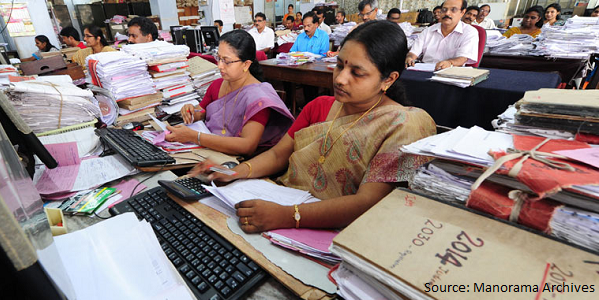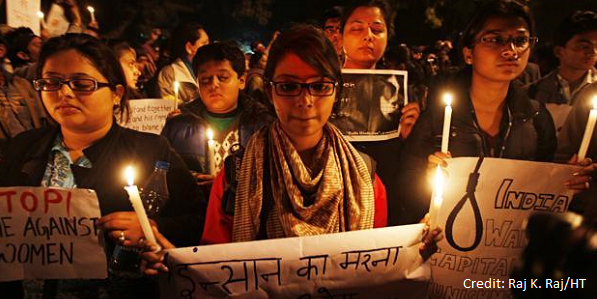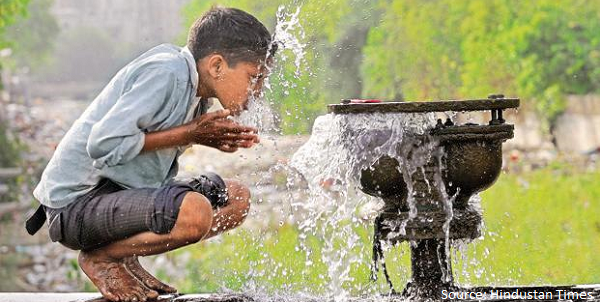महात्मा गांधी जी का सपना था कि भारत में एक ऐसी व्यवस्था हो जहाँ लोगों द्वारा सरकार चलाई जाए| भारत में समय-समय पर विकेंद्रीकरण को बढ़ावा देने के लिए कईं समितियां गठित की गई, चाहे वह अशोक मेहता समिति हो जिसमें द्विस्तरीय व्यवस्था की सिफारिश की गई हो या फिर बलवंत राय मेहता समिति, जिसने भारत में त्री-स्तरीय पंचायती राज व्यवस्था की सिफारिश की|
आखिरकार भारत में पंचायती राज व्यवस्था की स्थापना 24 अप्रैल 1992 से की गई और इसी के साथ 73वें एवं 74वें संवैधानिक संशोधन के अनुसार पंचायतों एवं शहरी निकायों को सरकार का दर्जा प्राप्त हुआ| ये अपने आप में एक ऐतिहासिक कदम था जिसके तहत केंद्र एवं राज्य के साथ-साथ स्थानीय स्तर पर भी सरकार के रूप में त्री-स्तरीय ढांचे की व्यवस्था की गयी| इस संवैधानिक संशोधन के बाद पंचायती राज संस्थाओं में सामान्य वर्ग के साथ-साथ अनुसूचित जाति एवं जनजाति समुदाय के लिए भी आरक्षण का प्रावधान किया गया ताकि वंचित समूहों को भी प्रतिनिधित्व करते हुए अपनी आवाज रखने का मौका मिले| महिलाओं के लिए पंचायतों में एक तिहाई स्थान आरक्षित किया गया ताकि महिलाएं भी स्थानीय सरकार का प्रतिनिधित्व कर सकें| बिहार, हिमाचल प्रदेश, महाराष्ट्र, राजस्थान सहित 20 राज्यों में महिलाओं को 50 प्रतिशत तक का आरक्षण दिया गया है|
पंचायती राज मंत्रालय, भारत सरकार के 2019 के आंकड़ों के अनुसार भारत में कुल 13,75,914 महिला प्रतिनिधि हैं जिसमें से जिला पंचायत में 8,091, पंचायत समिति में 75,620 तथा ग्राम पंचायत में 12,92,203 महिला प्रतिनिधि हैं|
लेकिन सवाल यह है कि क्या महिलाओं को इस व्यवस्था में बराबरी का दर्जा देना ही काफी है? क्या सरकार की तरफ से वाकई यह सुनिश्चित किया जाता है कि महिला प्रतिनिधि अपने पद पर आने के बाद अपना काम बेहतर तरीके से कर भी पा रही हैं या नहीं?
हिमाचल प्रदेश में पंचायतों के साथ अध्ययन करते समय कुछ चीजें मुझे देखने को मिली जो मेरे लिए काफी आश्चर्यजनक थीं| क्योंकि अध्ययन के लिए जिला पंचायत अध्यक्ष से भी मिलना था तो मैं और मेरे साथी उनसे मिलने के लिए उनके कार्यालय में गए| हमने जैसे ही उन्हें अपना परिचय देना शुरू किया तो महिला अध्यक्षिणी ने अपने साथ बैठे पुरुष की तरफ इशारा करते हुए कहा कि हमें जो भी जानकारी चाहिए उनसे ही बात करनी होगी| बातों-बातों में मालुम चला की वह पुरुष कोई और नहीं बल्कि उस महिला के पति थे| पुरुष ने भी बड़े आत्मविश्वास भरे स्वर में कहा कि सारा काम वे ही देखते हैं|
ये वाकई में हम सबके लिए भी बड़ा सवाल है कि आखिर फिर इस सबसे महिलाओं का सशक्तिकरण किस तरह से होगा? और जिस पद पर अध्यक्षिणी बैठीं हैं, तो फिर उस पद में उनकी अपनी भूमिका क्या है?
ये बस एक उदाहरण है, आपके आसपास भी आपको ये सब शायद देखने को मिल सकता है| राजनितिक माहौल में महिला प्रतिनिधियों के प्रति पुरुष समाज की रुढ़िवादी सोच बदलनी होगी। कुछ महिलाएं पहली बार राजनीतिक माहौल में आ रही हैं इसलिए उनमें भय, संकोच एवं घबराहट होना स्वाभाविक है।
अब सवाल ये है कि यदि सोच यह है कि महिलाओं को आगे लाकर उनकी प्रतिनिधित्व तथा निर्णय लेने की क्षमता को बढ़ाना है तो शायद सरकार को भी इसके लिए गंभीरता से सोचना होगा| अन्यथा ऐसी महिला प्रतिनिधियों को अपना 5 वर्ष कार्यकाल बीत जाने के बाद भी ये महसूस नहीं होगा कि वास्तव में उन्हें संविधान ने कितना बड़ा अधिकार दिया है जिससे वो समाज में अपनी एक अलग पहचान स्थापित कर पायें|
सरकार को एक ऐसा संस्थागत सिस्टम बनाना चाहिए जहाँ महिलाओं के लिए समय-समय पर क्षमता उत्सर्जन कार्यक्रम हों| सरकार की तरफ से नियमित तौर पर इस बात की जांच की जानी चाहिए कि क्या महिला प्रतिनिधि अपना काम स्वयं कर पा रही हैं या नहीं, क्या उन्हें किसी तरह के सपोर्ट, ज्ञान तथा कौशल की आवश्यकता है जिससे वो अपना काम और आसानी से कर पाएं| इसके लिए सिस्टम ऐसा हो जहाँ सरकार की तरफ से महिला प्रतिनिधियों के साथ चर्चा और उनका फीडबैक होता रहे, और साथ ही आवश्यकतानुसार नियमित सुधार भी होता रहे| इस सबसे कहीं न कहीं महिलाओं का भी मनोबल बढ़ेगा जिससे वे अपने पति, ससुर या अन्य किसी व्यक्ति के प्रभाव से परे उठकर अपने निर्णय स्वयं ले पाएंगी|
समाज के हर वर्ग को महिलाओं में साहस उत्पन्न करना तथा उनकी आंतरिक क्षमता एवं शक्ति पर भरोसा करना होगा। असलियत में महिलाओं को भी पुरुषों जैसा ही मान-सम्मान और सामाजिक प्रतिष्ठा देनी होगी जिससे वे बेहतर नेतृत्व करने में सक्षम हो पाएंगी|










